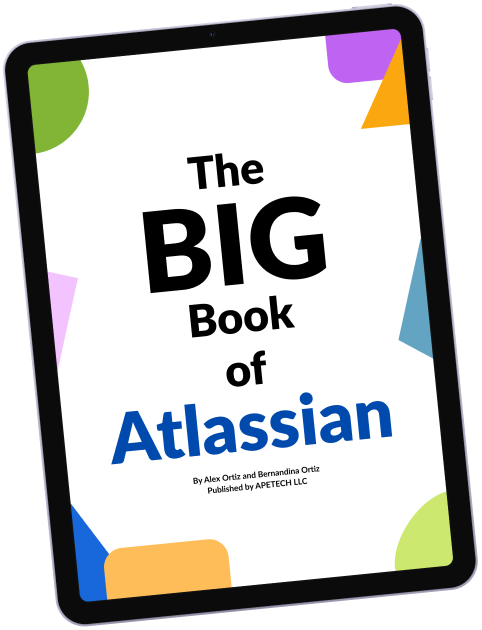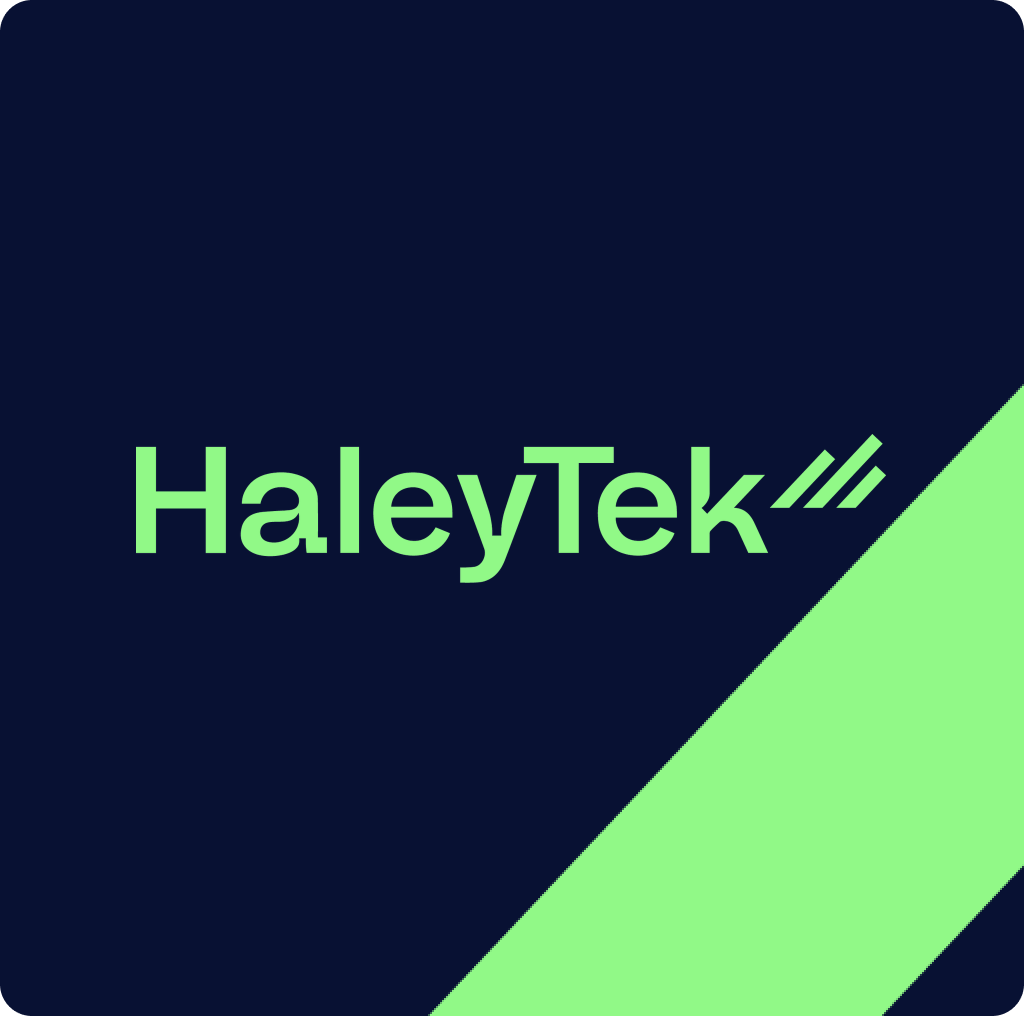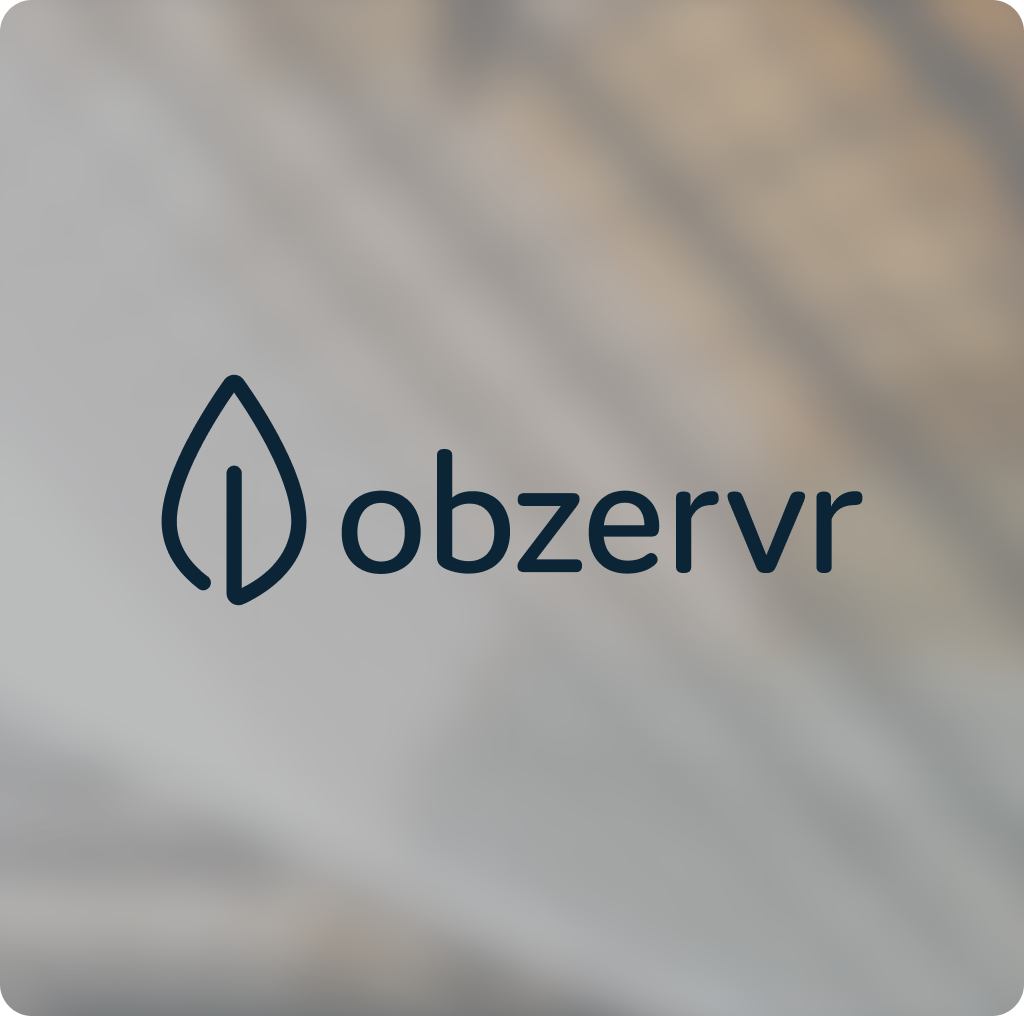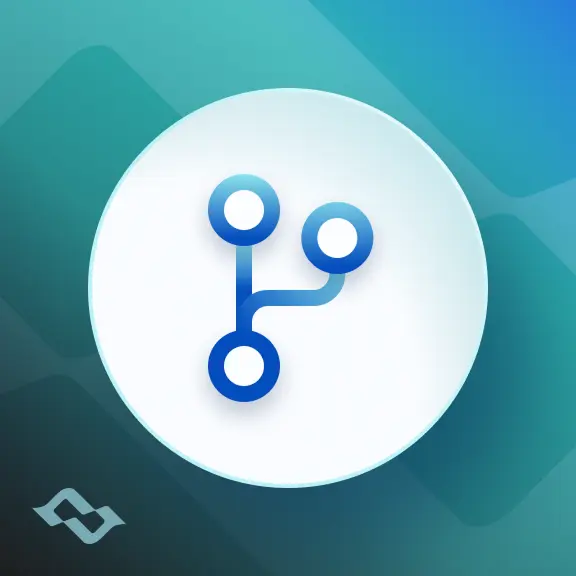In an era where projects span continents and teams operate remotely, project management tools have had to evolve significantly to meet the demands of dynamic work environments. The 2024 Gartner report on Adaptive Project Management and Reporting (APMR) offers critical insights into how project management tools are keeping pace with these changes. From enhanced collaboration capabilities to AI-powered decision-making, this report highlights the strengths and weaknesses of major players in the market.
In this article, we’ll explore the most important takeaways from the Gartner report, breaking them down into actionable insights for businesses looking to optimize their project management strategies. Whether you're a project manager, team leader, or an IT executive, these findings will provide you with a roadmap for selecting the right tools and understanding the future of APMR.
Understanding Adaptive Project Management and Reporting
What Is Adaptive Project Management and Reporting?
Adaptive Project Management and Reporting (APMR) is defined by tools and methodologies that support multiple delivery models to optimize project management practices across organizations. These tools are designed to handle complex resource management needs while promoting collaboration across distributed teams. They provide flexibility in how projects are managed, whether through traditional waterfall methods, agile, or hybrid approaches, enabling continuous value delivery.
The APMR market has grown out of necessity. As organizations deal with accelerating rates of change, they require tools that can adapt to new governance approaches, changing customer needs, and varied organizational structures. The goal? Support decision-making processes that are grounded in value, driven by data, and geared toward time-to-value perceptions.
Key Features of APMR Tools
For a tool to be considered part of the APMR landscape, certain features are non-negotiable. According to the Gartner report, these tools must:
- Support multiple methodologies: APMR tools should accommodate a variety of working methods—traditional, agile, and hybrid—within the same platform.
- Offer resource management and prioritization: This is crucial for managing both human and material resources effectively, particularly in environments with tight deadlines and distributed teams.
- Provide robust reporting capabilities: The ability to track and report on value is central to tactical decision-making. Clear, data-driven insights are essential for aligning project goals with business objectives.
These tools must be versatile enough to adapt to an organization’s specific governance structures without creating unnecessary bureaucracy. This agility is what differentiates adaptive project management solutions from their more rigid predecessors.
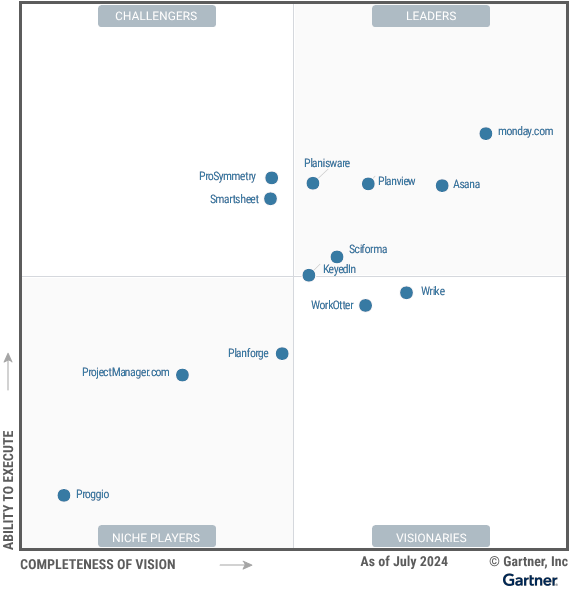
Insights from the 2024 Magic Quadrant for APMR Tools
The Gartner Magic Quadrant assesses various vendors in the APMR space, categorizing them as Leaders, Challengers, Visionaries, or Niche Players based on their ability to execute and the completeness of their vision. Here, we’ll examine some of the standout players from each category, focusing on their strengths, cautions, and what sets them apart.
Leaders in the APMR Space
Asana
Asana has maintained its position as a Leader in the APMR market, primarily due to its strong product strategy and customer-focused approach. According to Gartner, Asana excels in collaborative work management and has continually adapted its platform based on client feedback. Its consistent investment in AI, specifically in areas like prioritization and reporting, demonstrates its commitment to innovation.
However, Asana faces some challenges. While its market presence and global reach are significant, its business model has been scrutinized for operating at a deficit despite consistent revenue growth. Additionally, Asana’s pricing structure may deter some enterprise-level customers, as the most critical features are reserved for higher-priced plans.
Check out the case study: Asana to Jira Integration to Streamline Workflow
Monday.com
Monday.com has also been recognized as a Leader, thanks to its ability to support distributed teams using hybrid methodologies. Its product is lauded for its intuitive user experience and its investment in AI-powered enhancements, which simplify configuration and standardize processes. Monday.com’s geographical presence is another strength, as it offers data regions in the U.S., EU, and Asia/Pacific.
However, Monday.com’s rapid expansion into adjacent markets, such as IT service management and CRM, may dilute its focus on APMR-specific capabilities. This shift could create challenges for businesses seeking a tool strictly for project management purposes.
Check out Monday.com Integrations
KeyedIn
KeyedIn stands out for its focus on project execution management, including resource and capacity management, which is particularly valuable for industries like financial services, healthcare, and manufacturing. Its product roadmap emphasizes AI integration to enhance decision-making, making it a robust option for businesses with complex project management needs.
On the downside, KeyedIn’s recent acquisition by Sciforma introduces some uncertainty. While both companies met the inclusion criteria for the report, the full impact of the acquisition remains unclear. Additionally, KeyedIn’s global visibility is somewhat limited, especially outside of EMEA.
Challengers and Visionaries
ProSymmetry
ProSymmetry, a Challenger in the report, is gaining traction with its Tempus Resource tool, which focuses on resource management. ProSymmetry’s ability to manage complex resource planning is particularly noted by midsize and large organizations, especially in IT PMOs and R&D departments. Its pricing model, which offers competitive rates along with a free trial, makes it an attractive option for companies wanting to test the waters before committing.
However, its lack of industry specialization could be a drawback for companies seeking tailored solutions. ProSymmetry’s innovation efforts, while steady, may also become diffused as the company introduces additional products.
Wrike
Wrike is considered a Visionary due to its focus on collaborative project management and AI-powered productivity tools. Its Lightspeed architecture and Work Intelligence suite provide advanced capabilities like risk prediction and task automation. This makes Wrike a strong contender for enterprises that require dynamic project management with a focus on value-driven initiatives.
Despite its strengths, Wrike has faced some operational challenges following its acquisition by Symphony Technology Group. Customers have reported inconsistent performance between desktop and mobile versions, and some agile teams have noted gaps in standard metrics. Nevertheless, Wrike’s strong geographical strategy and partner network provide ample support for global operations.
Check out Wrike Integrations
Trends and Challenges in the APMR Market
The Role of AI in Project Management
One of the key trends highlighted in the Gartner report is the increasing integration of AI and machine learning (ML) into project management tools. AI is no longer just a buzzword—it is fundamentally changing how projects are executed, from resource allocation to risk prediction. Vendors like Asana, KeyedIn, and Monday.com have embraced AI to varying degrees, using it to automate routine tasks and provide actionable insights that help teams prioritize and manage workloads more effectively.
However, not all vendors are equally prepared to leverage AI’s full potential. The report notes that some companies are lagging behind in their AI adoption, which could put them at a disadvantage as AI becomes a standard feature in APMR tools.
Balancing Flexibility and Governance
The need for flexibility in project management is another theme emphasized in the report. As organizations adopt multiple methodologies—whether it’s agile, waterfall, or a hybrid approach—APMR tools must provide the agility to switch between frameworks without losing control over governance. Tools that can integrate seamlessly with an organization’s existing processes, while also supporting adaptability, will become increasingly valuable.
At the same time, too much flexibility can lead to a lack of structure, which can hinder project execution. The challenge for vendors is to offer tools that balance governance and flexibility, ensuring that projects are executed efficiently while still allowing for adjustments when necessary.
No-Code and Low-Code Capabilities
Another significant trend is the rise of no-code and low-code integration capabilities. These features allow users to customize their project management environments without needing in-depth technical knowledge. This democratization of software customization is a game-changer for organizations that need to adapt quickly to new business requirements. Vendors like Wrike and Monday.com are leading the charge by offering robust no-code options, making it easier for non-technical users to build workflows that suit their needs.
Conclusion: What the Future Holds for APMR Tools
The 2024 Gartner Report makes it clear that the future of project management lies in adaptability, collaboration, and AI-driven insights. As organizations continue to evolve, their project management needs will only become more complex. APMR tools that can keep pace with these changes—by offering flexibility, robust governance, and intelligent automation—will be the ones that lead the market.
For businesses looking to optimize their project management strategies, the key takeaway is to prioritize tools that not only meet your current needs but also offer the scalability and innovation to grow with your organization. Whether you choose a market leader like Asana or an up-and-coming challenger like ProSymmetry, the right APMR tool will empower your teams to collaborate more effectively, manage resources more efficiently, and ultimately, deliver more value to your organization.

Getint: Powering Seamless Integration for Teams Across Platforms
As organizations scale and adopt multiple tools, ensuring seamless data flow and collaboration across these platforms becomes crucial. Getint steps in as a solution that centralizes integration between tools like Jira, Asana, Monday.com, and more. By eliminating data silos, Getint enables real-time synchronization and consistent project visibility across teams. This unified approach improves operational efficiency, streamlines workflows, and ensures that all teams—regardless of their preferred tool—can collaborate effectively, driving organizational success at a broader level.


